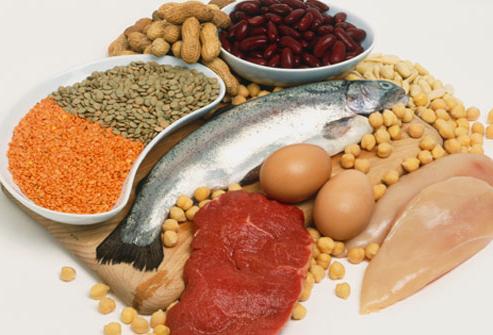As you know, proteins are a necessary and basic component of any living organism. It is they who are responsible for metabolism and energy conversion, which are inextricably linked with almost all life processes. The dry matter of the vast majority of tissues and organs of animals and humans, as well as more than 50% of all microorganisms, mainly consist of proteins (from 40% to 50%). Moreover, in the plant world their specific gravity is lower than the average, and more in the animal. However, the chemical composition of proteins for many people is still unknown. Let us recall once again what is inside these high molecular weight natural polymers.
Protein composition
This substance on average contains about 50-55% carbon, 15-17% nitrogen, 21-23% oxygen, 0.3-2.5% sulfur. In addition to the listed main components, sometimes the composition of proteins includes elements whose specific gravity is very insignificant. First of all, it is phosphorus, iron, iodine, copper and some other micro and macro elements. It is curious that the concentration of nitrogen has the greatest constancy, while the content of other key components may vary. Describing the composition of the protein, it should be noted that it is an irregular polymer built from amino acid residues , the formula of which in a solution of water at neutral pH in the most general form can be written as NH3 + CHRCOO-.
Between themselves, these "bricks" are connected by an amide bond between carboxyl and amine groups. In total, about a thousand different proteins have been revealed in nature. This class includes antibodies, enzymes, many hormones, and other active biological substances. Surprisingly, with all this diversity, the composition of the protein can include no more than 30 different amino acids, 20 of which are the most popular. In the human body there are only 22 of them, while the rest are simply not absorbed and displayed. Eight amino acids from this group are considered to be indispensable. These are leucine, methionine, isoleucine, lysine, phenylalanine, tryptophan, threonine and valine. Our body cannot synthesize them on its own, and therefore their entry from the outside is required.

The rest (taurine, arginine, glycine, carnitine, asparagine, histidine, cysteine, glutamine, alanine, ornithine, tyrosine, proline, serine, cystine) he can create independently. Therefore, such amino acids are classified as interchangeable. Depending on the presence of the first group of protein, as well as on the degree of its assimilation by the body, the protein is divided into full and inferior. The average daily consumption of a given substance for a person is in the range from 1 to 2 grams per kilogram of weight. At the same time, inactive people should adhere to the lower limit of this range, and sportsmen should adhere to the upper one.
How to study protein composition
To study these substances, the hydrolysis method is mainly used. The protein of interest is heated with dilute hydrochloric acid (6-10 mol / liter) at a temperature of 100 ° C to 1100 ° C. As a result, it will decompose into a mixture of amino acids, from which individual amino acids are already isolated. Currently, paper and ion-exchange chromatography are used for the quantitative analysis of the studied protein. There are even special automatic analyzers that can easily determine which amino acids are formed as a result of decay.